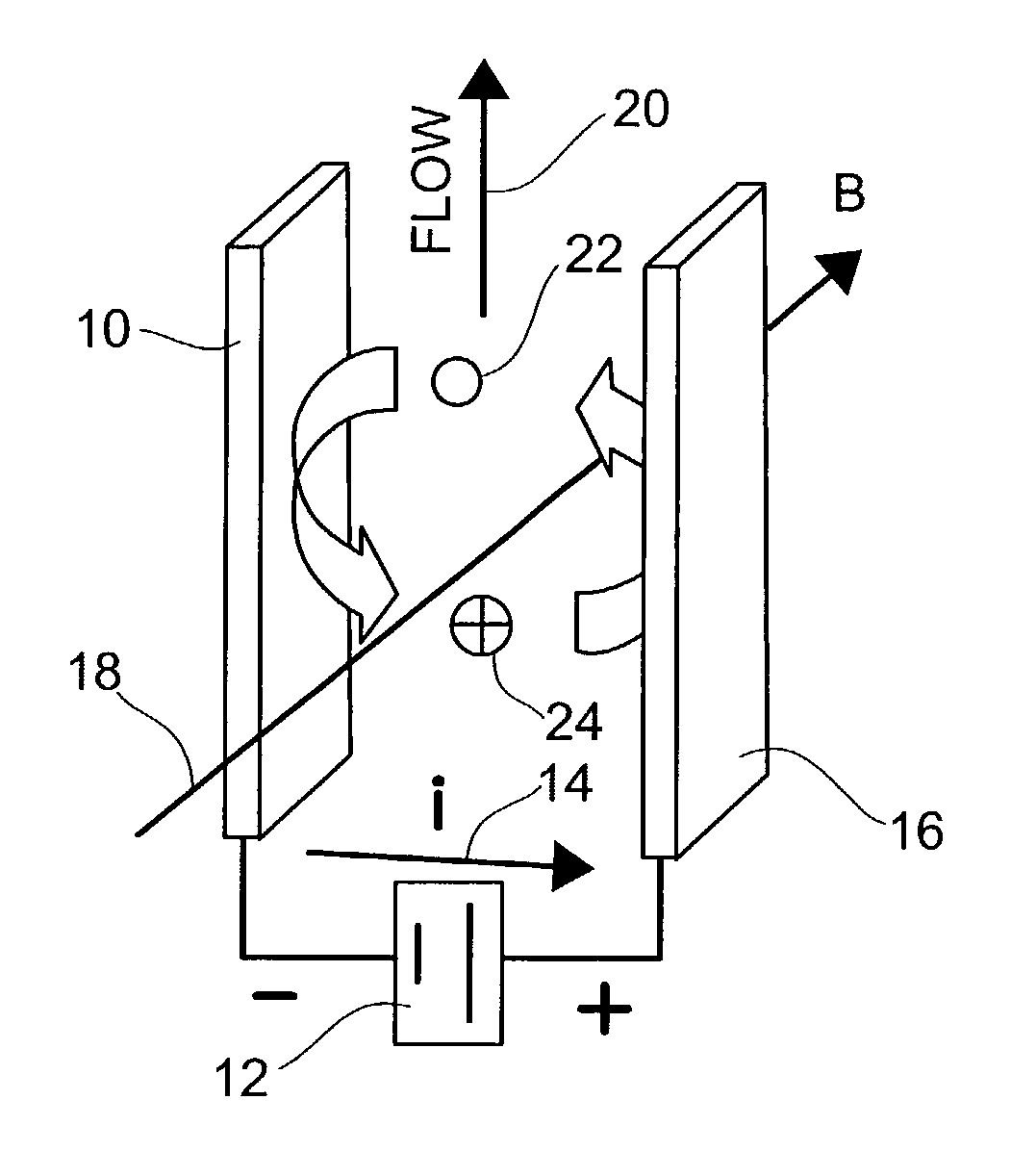Microfluidics and small volume mixing based on redox magnetohydrodynamics methods
- Summary
- Abstract
- Description
- Claims
- Application Information
AI Technical Summary
Benefits of technology
Problems solved by technology
Method used
Image
Examples
Embodiment Construction
[0061]MHD Lorentz forces have been known to physicists for almost 200 years. It involves 3 physical fields all perpendicular to one another. The flow or velocity field is aligned perpendicular to both the magnetic and electric fields which are also perpendicular to one another. Manipulation of any two of these fields results in a change in the third one. In the present invention, an electric field and a magnetic field are applied to a channel both being perpendicular to the desired direction of flow.
[0062]MHD technology requires a relatively dense current in order to induce a significant rate of flow through the channel. At larger scales this is not practical. Small scale, microfluidic channels however, because of the unique properties associated with microelectrodes in close proximity to one another, allow for relatively high current densities. These may be combined with natural magnets. Magnetic fields on 0.4T or less may be adequate. Because natural magnets and a low amount of el...
PUM
 Login to View More
Login to View More Abstract
Description
Claims
Application Information
 Login to View More
Login to View More - R&D
- Intellectual Property
- Life Sciences
- Materials
- Tech Scout
- Unparalleled Data Quality
- Higher Quality Content
- 60% Fewer Hallucinations
Browse by: Latest US Patents, China's latest patents, Technical Efficacy Thesaurus, Application Domain, Technology Topic, Popular Technical Reports.
© 2025 PatSnap. All rights reserved.Legal|Privacy policy|Modern Slavery Act Transparency Statement|Sitemap|About US| Contact US: help@patsnap.com



